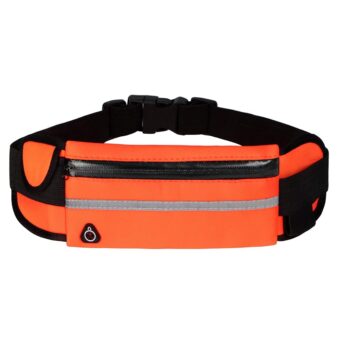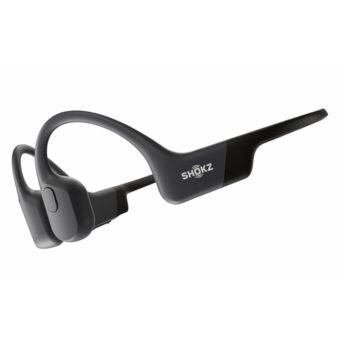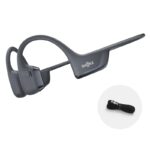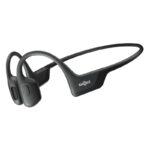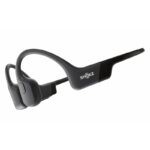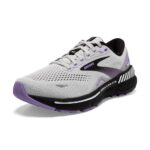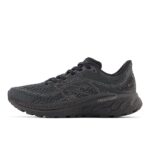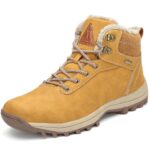Understanding Winter Running Gear Essentials
When it comes to winter running, layering is your secret weapon against the cold. Start with a moisture-wicking base layer that fits snugly against your skin; this helps in evaporating sweat while keeping your body warm. Over this, opt for an insulating mid-layer, such as fleece or wool, which traps heat without adding excessive bulk. The outer layer should be windproof and waterproof to shield you from biting winds and unexpected snowflakes, ensuring you maintain comfort throughout your run.
Footwear is equally critical during the colder months. Look for shoes that offer excellent traction; consider models with built-in insulation or waterproofing features. Adding thermal running socks can provide extra warmth while minimizing blister risk—a common concern during chilling weather when feet are prone to moisture retention. Don’t overlook accessories either; quality gloves, headbands, and neck gaiters can provide vital protection against frostbite and keep circulation flowing smoothly to these often-neglected extremities. With the right gear in place, winter runs can transform into invigorating adventures rather than daunting tasks!
Additionally, it’s essential to pay attention to your running route. Opt for paths that are well-maintained and free of ice or snow whenever possible, as these conditions can significantly increase the risk of slips and falls. Look for local parks with cleared trails or consider utilizing indoor tracks on particularly harsh days.
Another important aspect is adjusting your mindset for winter running. Embrace the opportunity to experience nature in its serene, wintry beauty; the quietness of a snow-covered landscape can provide a refreshing backdrop that invigorates both mind and body. Set realistic goals based on weather conditions, such as shorter distances or slower paces when faced with harsher elements.
Stay hydrated too! While you may not feel as thirsty in colder temperatures compared to summer heat, your body still loses water through respiration and exertion during exercise. Remember to drink fluids before heading out and keep sipping afterward.
Lastly, consider incorporating cross-training into your routine during winter months—activities like cycling or swimming can help maintain cardiovascular fitness while reducing impact on joints from running on frozen surfaces. Strength training exercises focused on core stability will also enhance balance and agility, making you more resilient against potential slips.
With all these considerations accounted for – proper gear selection, mindful route planning, mental preparedness, hydration awareness – your winter runs won’t just be survivable but truly enjoyable experiences that keep you motivated throughout the season!
Choosing the Right Footwear for Winter
When it comes to winter running, the right footwear can make or break your experience. Gone are the days when a simple pair of sneakers sufficed; winter demands a fresh approach to tackling slippery roads and frigid temperatures. Look for shoes that boast insulation and waterproofing features—this will keep your feet warm and dry while allowing you to focus on your pace rather than discomfort.
Prioritizing traction is another crucial element when selecting winter footwear. Shoes with aggressive lug patterns and materials specifically designed for cold weather conditions provide much-needed grip, ensuring you won’t be sidelined by unexpected slips on icy trails or sidewalks. Consider checking out brands that offer specialty models equipped with added features like removable spikes or rubber soles engineered for freezing conditions. Remember, a stable stance not only enhances safety but also maintains your running efficiency throughout the chilly season.
Lastly, don’t overlook the importance of wearing proper socks in conjunction with your winter shoes. Merino wool or synthetic blends wick away moisture while providing warmth without bulkiness, ensuring your feet remain comfortable over longer distances. Investing time in choosing both the right footwear and accompanying gear can transform your winter runs from grueling chores into exhilarating experiences that invigorate body and soul alike!
Dressing in Layers for Optimal Comfort
Dressing in layers is an essential strategy for winter running, transforming how you approach cold weather workouts. The foundation of this technique lies in understanding the three essential layers: a moisture-wicking base layer that keeps sweat away from your skin, an insulating mid-layer that traps body heat, and a protective outer layer to shield against wind and precipitation. This tri-layer system not only promotes comfort but also allows for versatile adjustments; if you start to overheat during your run, shedding a layer becomes an effortless solution.
But layering isn’t just about temperature—it’s about movement too. Choose materials that offer both stretch and breathability; merino wool or synthetic blends work wonders in regulating temperature while allowing freedom of motion. Moreover, don’t neglect accessories such as gloves, headbands, or neck gaiters, as extremities are often the first to feel the chill. By embracing the art of layering strategically, you can maintain optimal comfort throughout your run—surviving those frigid morning jaunts while making every mile enjoyable!
women’s winter running clothes
winter running clothes for men
Remaining Noticeable During Shorter Days
As the days grow shorter and darkness encroaches earlier, staying visible during winter runs becomes not just a preference but a necessity. Reflecting on how light interacts with our surroundings can enhance safety on those chilly evenings. Opt for gear that incorporates reflective materials—these little luminescent details catch car headlights and draw attention, ensuring you are seen by passing vehicles. Additionally, consider layering soft glow sticks or LEDs onto your attire; even the smallest flicker of light can make you stand out against the muted backdrop of winter.
Hydration Tips for Cold Weather Running
When winter’s chill sets in, many runners overlook the crucial importance of hydration. Contrary to popular belief, dehydration can still sneak up on you during cold weather due to lower perspiration rates and reduced thirst signals. To combat this, start your run well-hydrated—consider drinking a glass of water or an electrolyte-rich drink before you lace up your shoes. It’s also wise to carry a lightweight water bottle or hydration pack; many insulated options are available that keep your fluids from freezing, ensuring you’re not only sipping warmth but also replenishing essential electrolytes.
In addition to traditional fluids, consider incorporating warm beverages into your routine. Sipping on herbal teas or low-calorie broths post-run can restore lost minerals while also providing comfort after braving the elements. If you’re running for over an hour, look for portable options like energy gels infused with electrolytes, which can easily be stashed in pockets without adding bulk. Keep an eye out for signs of dehydration—like fatigue and dizziness—because they might creep up more subtly during those brisk runs than in warmer months. By staying proactive about hydration strategies this winter, you’ll ensure that frigid temperatures won’t freeze your performance!
Adjusting Your Training Schedule in Winter
As the temperatures dip and daylight dwindles, adjusting your training schedule is crucial for maintaining both motivation and performance during winter runs. One effective strategy is to capitalize on the midday sun when it’s at its warmest. Instead of sticking to your usual morning or evening routines, consider a lunch break run that not only gives you a boost of energy but also allows you to soak up some precious Vitamin D—ideal for combating seasonal affective disorder.
Moreover, incorporating flexibility into your schedule can help combat winter-specific challenges like icy roads or inclement weather. Rather than adhering strictly to planned distances or times, adapt your workouts based on conditions; this could mean swapping out an outdoor interval session for an indoor strength workout on particularly frigid days. Embracing cross-training options like swimming or cycling can also keep up your cardiovascular fitness while giving you a much-needed break from braving the elements. By being proactive and adaptable with your training schedule, you’ll not only enhance physical resilience but will likely discover new favorite workouts along the way.
Safety Precautions on Icy or Snowy Paths
Navigating icy or snowy paths requires a proactive mindset and an arsenal of safety precautions. First, invest in proper footwear; shoes equipped with specialized traction or removable studs can make all the difference when encountering slick surfaces. Additionally, consider incorporating gaiters into your winter running gear to prevent snow from packing into your shoes, ensuring steadiness as you navigate through tricky terrain.
Another crucial element is awareness of your surroundings. Running on busy streets might tempt you due to easier footing, but keep an eye on traffic and look for designated pathways instead. It’s also wise to adjust your pace—slowing down not only diminishes the risk of slipping but also enhances stability by allowing better control over each stride. Don’t forget your visibility; shorter daylight hours mean reflective gear becomes essential for evening or early morning runs, transforming you from a hidden runner into a conspicuous figure against the winter backdrop. By embracing these strategies, you can enjoy winter running while keeping safety at the forefront of your experience.
Mental Strategies to Stay Motivated
To maintain motivation during winter running, it’s essential to harness the power of mental strategies that resonate with your personal goals. One effective approach is visualization: before each run, take a moment to vividly imagine not only your destination but also the exhilaration you’ll feel upon completing it. Picture the crisp air filling your lungs as you navigate through serene winter landscapes, creating a mental movie that fuels your desire to lace up those shoes even on the coldest days.
Another potent strategy is setting micro-goals within each session. Instead of fixating on a long-term objective like a race or overall distance, break down your runs into smaller, manageable segments—for instance, aiming to sprint for just five minutes or tackle an uphill stretch. This technique fosters immediate gratification and reinforces positive feedback loops in your brain, making every run feel rewarding regardless of external conditions. By shifting focus from what lies ahead to celebrating these smaller victories, you can cultivate resilience and enthusiasm for each chilly outing.
Embracing the Challenge of Winter Running
In conclusion, winter running is not merely a test of endurance; it’s an exhilarating journey that enhances both body and mind. Each stride through the winter wonderland invites you to savor the beauty of nature while challenging your mental fortitude in ways that warmer months simply can’t replicate. As you embrace the chill, you’ll find that every run becomes a celebration of resilience and transformation, igniting a passion for adventure even in the coldest conditions. The rewards extend far beyond physical fitness, empowering you to tackle challenges with newfound vigor and adaptability. So gear up, head out into the frosty air, and uncover the thrilling possibilities that await with each winter run!


